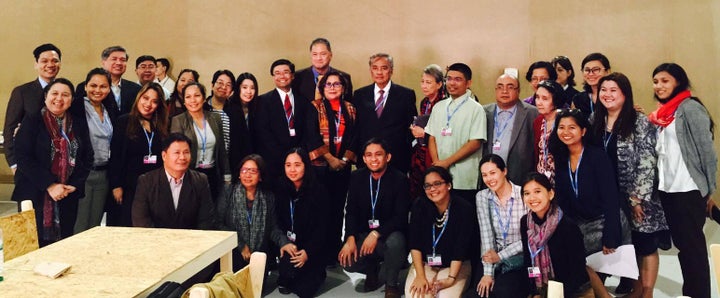
The Philippine delegation to COP 22 has a huge responsibility in negotiating for solutions to the climate crisis as the nation remembers the lessons learned from its experiences during the onslaught of typhoon Haiyan.
On November 8, 2013, typhoon Haiyan struck the Philippines, resulting in unprecedented devastation in the country's history. As the strongest storm on record to make landfall, its impacts went beyond the 6300 confirmed deaths and more than USD 2 billion worth of destroyed properties it caused.
Never before has an entire nation witnessed winds, rainfall, and storm surges as extreme as seen with Haiyan. Reports of typhoon victims resorting to looting and other violent acts unveiled the desperation people will resort to for their survival in a chaotic, post-disaster environment. It also revealed the lack of a coordinated, efficient response from the national and local governments, which further slowed down the recovery process that still continues to this day.
This disaster occurred at a time when global temperatures has increased by 0.78°C relative to pre-industrial levels, according to the National Oceanic and Atmospheric Administration (NOAA). With the currently implemented climate mitigation mechanisms to stabilize atmospheric greenhouse gas concentrations still decades from now, global warming is projected to worsen in the near future.
According to a study published in the journal Earth System Dynamics, a temperature rise of 1.5 or 2 degree Celsius will install a more extreme, unpredictable climate system. Regional dry spells will increase by 7 and 11 percent in warming scenarios of 1.5 and 2 degree Celsius, respectively. It also revealed that tropical regions such as Western Africa, Southeast Asia, and parts of South America will face significant reductions in local crop yields, specifically for maize and wheat. Marine ecosystems, especially coral reefs, are at risk of severe degradation by 2050, posing major consequences on natural processes and the global economy.
Such a troubling situation lead to the eventual adoption and ratification of the Paris Agreement last December in Paris. This international agreement commits to controlling the global mean temperature increase to well below 2 degree Celsius, specifically to "pursue efforts to limit the temperature increase to 1.5 degree Celsius" by 2100. Specifically, it provides a minimum climate aid of USD 100 billion for developing nations, especially those frequently hit hard by extreme weather events such as the Philippines. As it has entered into force on November 4, the urgency for realizing its progressive terms is one of the main focal points of the UNFCCC COP22 currently taking place in Marrakesh, Morocco.
For the Philippines, the implications of the ongoing climate negotiations are far-reaching to its development. For instance, the creation of a strong process to address the losses and damages from unavoidable climate impacts, as specified under the Paris Agreement, should be closely looked into by vulnerable nations in COP22. Discussions between developed countries, which refuse to be considered legally liable for climate-related damages, and poorer developing nations regarding disaster management are crucial to making progress in solving the climate crisis.
Encouraging more investments in clean energy creates an interesting dilemma for the Philippines, whose national administration is also supporting the installation of more coal-fired power plants in the next few decades. The implementation of mitigation measures to reduce greenhouse gas emissions is another urgent step for all nations to take, regardless of their contributions to the global economy or the atmospheric carbon budget. However, the limitations of the country to install more renewable energy facilities due to an unfavorable socioeconomic environment presents challenges that may be solved with policy changes and immediate development through financial aid from developed countries.
Nearly three years has passed since Haiyan, and the Philippines has experienced numerous strong typhoons and other extreme weather events. Yet none of them came close to causing as many casualties or as severe of destruction to property. While it has shown remarkable improvements in its disaster risk reduction and management, the country needs to continue its commitment to becoming more climate-resilient, especially with the projected occurrence of stronger typhoons and warmer droughts in the future.
The Philippines has played a key role in ensuring that recent climate negotiations produced the Paris Agreement. With the well-being of millions of its citizens on the line, it is time for the country to completely commit to a sustainable path against climate change. To accomplish this, it must start and continue at COP22.
This post is part of a series produced by The Huffington Post, in conjunction with the U.N.’s 22nd Conference of the Parties (COP22) in Morocco (Nov. 7-18), aka the climate-change conference. The series will put a spotlight on climate-change issues and the conference itself. To view the entire series, visit here.
